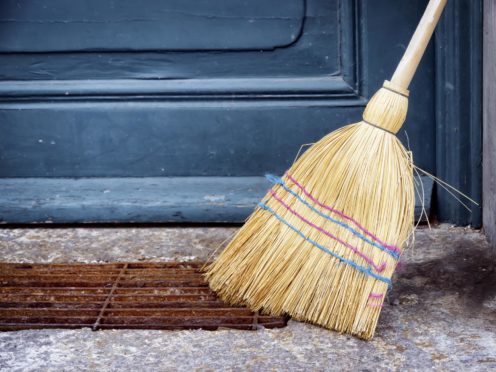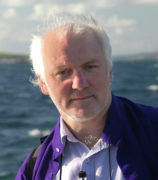Happy Hogmanay! On this night, when I was a child, we gathered and everyone had a sack, and then, led by the oldest boy in the village, we walked to every house.
The lead boy carried the caisean, which in my days was the breast-strip of a sheep dipped in tallow which was then lit inside every house so that every member of the household could put it sunwise round their head three times and be blessed. The downside was that if it went out as it circled round someone’s head that person would be unlikely to see the year through. So, many old folk refused to perform the ritual. I now understand why.
Before gaining entry into any home we collectively recited the ancient Duan Chullaig (Hogmanay Ballad) which linked the past with the present, ensuring a kind of eternal bond of tradition. It still continues, with one modern progression – girls are also now part of the travelling troupe to welcome in the new year.
In a wider Scottish context, the last day of the old year and the first of the new were always generally observed with great festivity. At one time they were called The Daft Days, because they gave folk official permission to cross and break boundaries. All the great feast days promised that providential liberty: Christmas, known as Yule, gave some rest and food to the endless grind of the poor, as an old rhyme from Fife puts it:
‘Yule’s come, and Yule’s gane,
And we hae feasted weel;
Sae Jock maun tae his flail again,
And Jenny tae her wheel,’ to be followed by tonight’s call as they went round the doors:
‘Hogmanay, Trollolay,
Gie us white bread, and nane o’ yer gray!’
One of the simplest traditions I heard of was told by Heather Dewar from Islay who told Seanchas Ìle in 2007 how they had a family tradition of literally sweeping out the old year and letting the new one in: “As soon as it was one minute before midnight my father opened the back door to let the old year out and then he would open the front door and we swept the old year out the back door.”
These and other Old into New Year rituals safeguard the fluid borders between the past and the future. The fire had to be kept burning all night, for it carried you over from one dispensation into the next. It promised continuity, even as things changed. The last wind of the departing year would prove to be the prevailing wind of the coming year.
Not only did you carry the known securities of the past forward, you also guarded yourself against the unknown dangers of the future. Houses were dressed with mountain ash, and the animals marked with tar, and it was unlucky if the first-visitor you had in the New Year arrived empty-handed.
All our rituals give us a sense of continuity with the past. The hope (or fear) that things will always be as they were, despite all the evidence to the contrary. Borders and margins are exciting and dangerous places. You leave one country and enter another; you turn the page to continue the story.
Given this fraught year that’s past, we have much to consider. And to be thankful for. We are still here, a vaccine is with us, and I have no doubt that all of us have learned again that we are all, truly, in it together. We are like the boys and girls preparing even now (if only virtually) to gather in Uist and elsewhere tonight, sacks at the ready, songs and ballads learnt, and the joy of going off together to visit their neighbours. They will only be allowed in if they sing the old song, and once inside they will be welcomed and given gifts.
May that be our communal experience too this Hogmanay and New Year: may the tallow candle burn steadily and brightly as you turn it sunwise three times. And if you’re having a wee dram, try saying this auld blessing as fast as you can:
‘Here’s to you and yours
No forgetting us and ours;
And when you and yours
Come to see us and ours,
Us and ours
Will be as kind to you and yours
As ever you and yours
Were to us and ours
When us and ours
Come to see you and yours.’
Bliadhna Mhath Ùr dhuibh – and a very Happy New Year to you all.
Angus Peter Campbell is an award-winning writer and actor from South Uist

